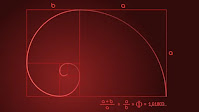There is a real problem with Fibonacci ratios. These were developed from Leonardo's original 1202 AD mathematical study into the propagation habits of rabbits.
In Fibonacci Research, Leonardo's main contribution was the introduction of Hindu-Arabic numerals to the west. He did NOT create or invent Fibonacci number sequences. These were already known as early as the 6th century in India or from 200 BC in work by Pingala.
Unfortunately, those progressive math sequences (to infinity, incidentally) have been adopted, migrated and defined into investment decisions as gospel truth price ratios with predictive characteristics on a short term basis.
They are typically defined as percentage measurements for advances or declines. Of course, these percentage ratios are randomly present in nature, no doubt about it. Indeed, these ratios do occasionally occur in investing and may coincide randomly with market price changes and various support/resistance levels.
But they may also achieve a Fib ratio
of 41.3 or 67.9 just as easily as 38.2 because there are advances and
declines of various degrees at different times on a cyclic level.
They also do not define the herd instinct. Fibonacci ratios deal only with
the principles of potential growth or decline, not total time frame trend
structure or direction.
Consequently, this total picture is an interesting mathematical exercise but is clearly incomplete without the inclusion of all relevant factors and variables.
At the very least, they would be
better served checking support and resistance zones.
Most would be better served to observe comparison ratios, such as the XAU/Gold ratio or the Gold/SPX ratio where one can determine if the primary index is running faster or slower to another related index or stock. In effect, a relative strength comparative indicator.
Precision time and distance measurements including the mathematical constant PI (3.141) have great relevance in time as clearly outlined here and here.
In the natural world, PI is also suggested to provide the context to explain the "relationship of gravity, momentum and energy."
Elliot Wave Theory
Another attempt at defining trends is the Elliot wave theory where periodic highs and lows are recorded in a count structure that allegedly indicates a trend. Unfortunately, one never knows with any certainty what the trend is because there is always an “alternate count”, which is also constantly changing. I have never seen anyone make money consistently with Elliot Waves.
The trend is not about measuring the waves because wave analysis is about as valuable as a rear view mirror in a head on collision with a rock. The trend is all about direction, energy and flow.
A
time frame trend defines all the variables and factors, known and unknown. It
is vastly superior to any other methodology.
The primary objective of any trade is to identify that trend, starting first in the daily time frame.
All other activities are largely useless noise and nonsense.
In Conclusion
Fib ratios may occasionally coincide and be useful with general support and resistance levels but are not trends or direction. It is a relationship study only, not a mysterious hidden code from the universe that answers everything.

No comments:
Post a Comment